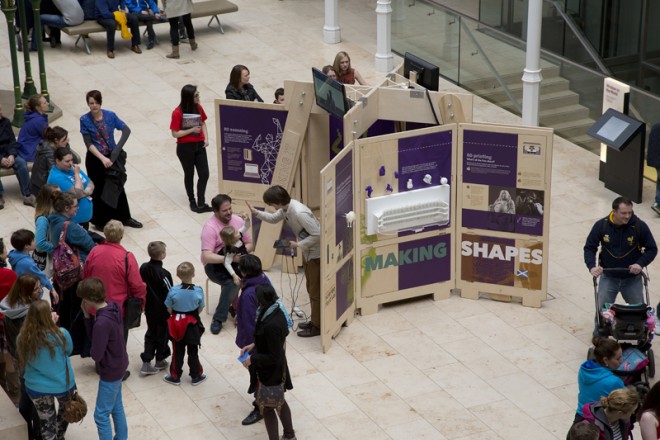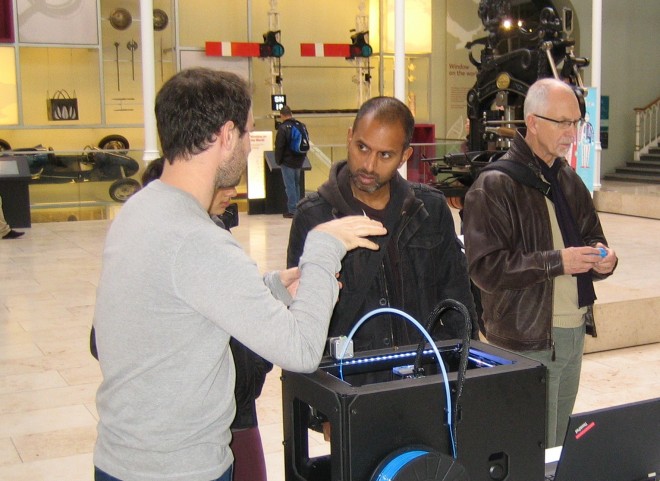I started volunteering at National Museums Scotland as a student at Heriot-Watt University; for several years, both establishments have run a student placement programme together. As a student in Mechanical Engineering, I was thrilled at the idea of being involved with the museum – especially as it’s an Edinburgh landmark where I spent many hours during my childhood.
The aim of my student project in 2013 was to introduce and establish 3D printing as a new technology within the Science and Technology department here, laying the groundwork for training museum staff and developing a new display to showcase this exciting new area of engineering.

The project proved a great success and after my student placement finished, the museum offered me a volunteer role. Using my subject knowledge, National Museums Scotland purchased a new high-end 3D printer which opened up new opportunities to work with our collections. In the Natural Sciences department, for example, we were able to turn CT scans of fossils into physical objects without harming the specimen itself. This helped curators to further investigate objects still sealed in rock. Not only did this bring an unseen part of the collection to life, it also enabled me to put these objects directly into the hands of museum visitors during events especially for children or the visually impaired, allowing them more tactile experiences.

I enjoyed working with National Museums Scotland so much that it wasn’t long before my project work started to exceed the original scope of the initial volunteering role. In 2014, Dr Klaus Staubermann, Principal Curator of Technology, and I agreed that it would be highly beneficial to develop 3D printing opportunities for the many different audiences at the museum. This we did through a series of highly successful public events, for example a Future Fictions event which generated a remarkable level of interest and debate among some several hundred visitors, including families and children.

My volunteer role quickly spread across the museum as interest in 3D technology grew. We organised a 3D printing demonstration as part of a Museum Lates event, including a live printing of Dolly the Sheep next to her display, again triggering questions and discussion among visitors. Next was a major fundraising event aimed at some 100 potential donors, which generated a lot of interest, also around questions of the nature of museum objects – and led to several substantial donations for the museum. More recently, I trained the Enablers team from Learning and Programmes on using the museum’s 3D printer for their wide range of public activities and events.

The highlight of my time volunteering at National Museums Scotland was contributing to a series of Edinburgh International Science Festival events hosted at the museum in April 2014. This was attended by more than 20,000 visitors. With one of the Festival’s themes being the role of 3D printing, I helped and consulted the team on ways to enrich their 3D printing displays – some of which were based on the collections, provided technical support with the 3D printers used, and delivered presentations for various audiences.
More exciting opportunities lie ahead and only some weeks ago, I presented to some 20 curators and conservators at an internal seminar to explore further 3D printing opportunities at the museum. During my time volunteering at National Museums Scotland, we have fostered the relationship with Heriot-Watt University and are now working in collaboration. Their pioneering research, such as the 3D printing of human organs for transplants, will inform a 3D printing display in our six new Science and Technology galleries opening this summer.
